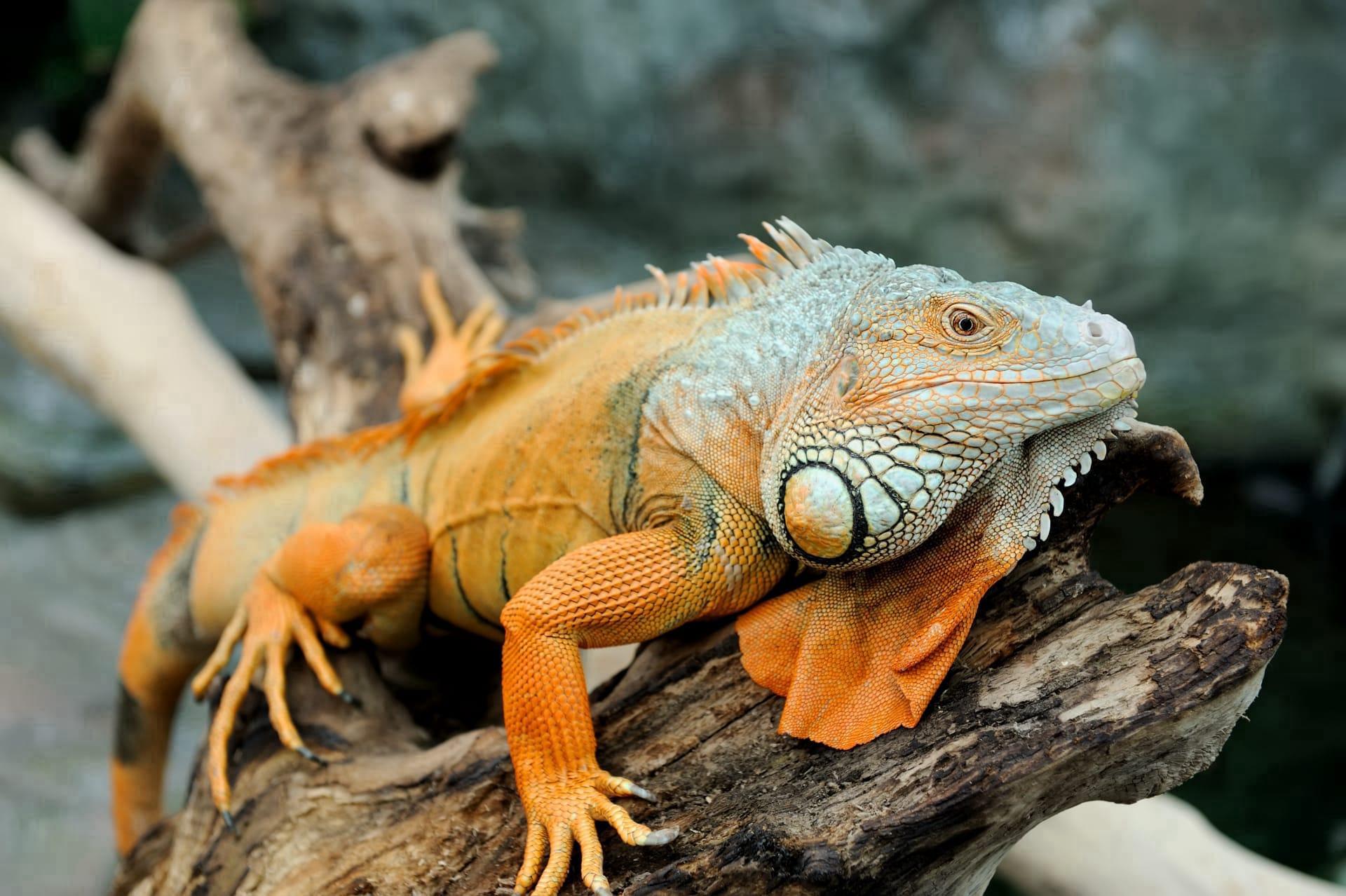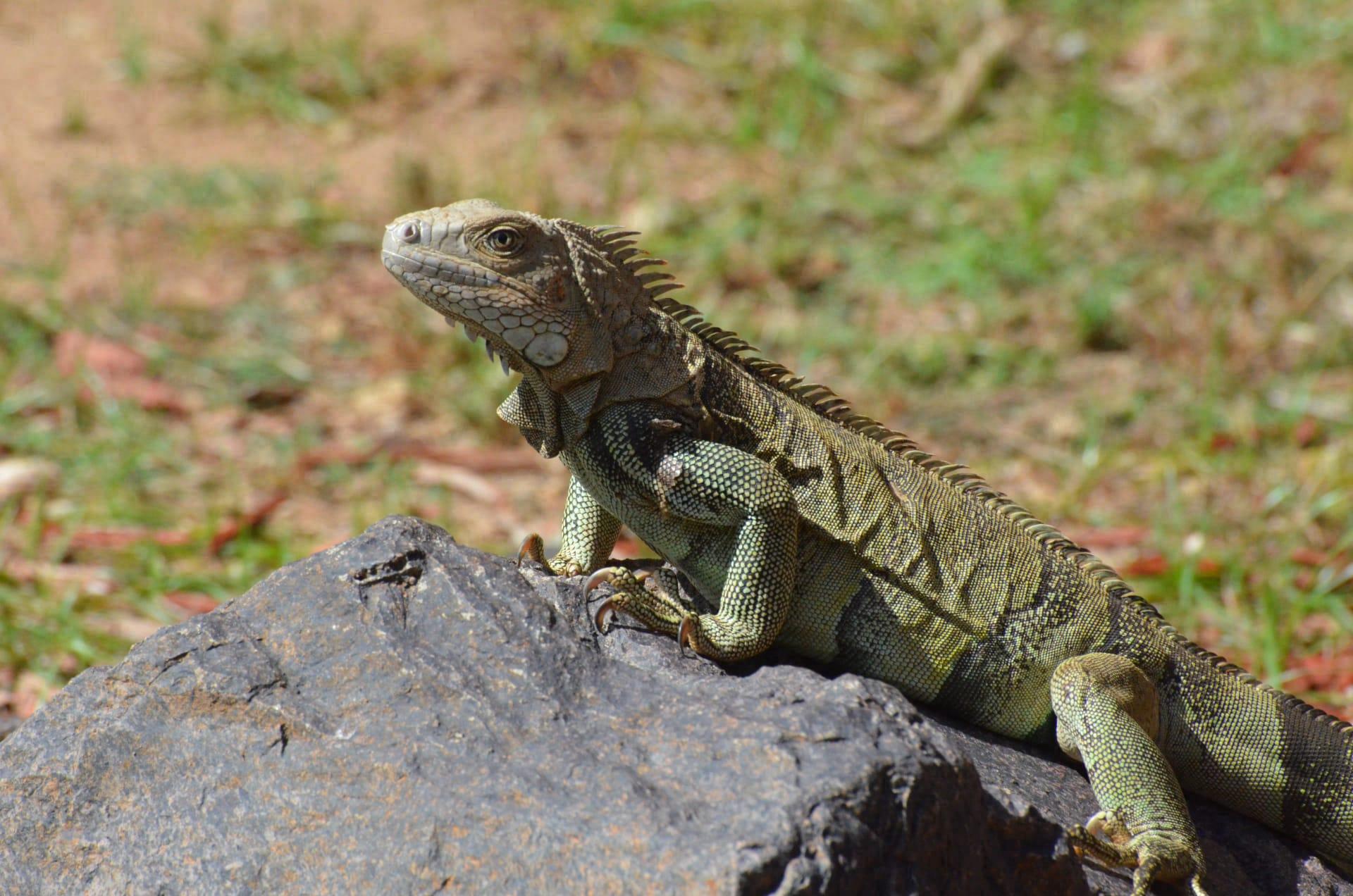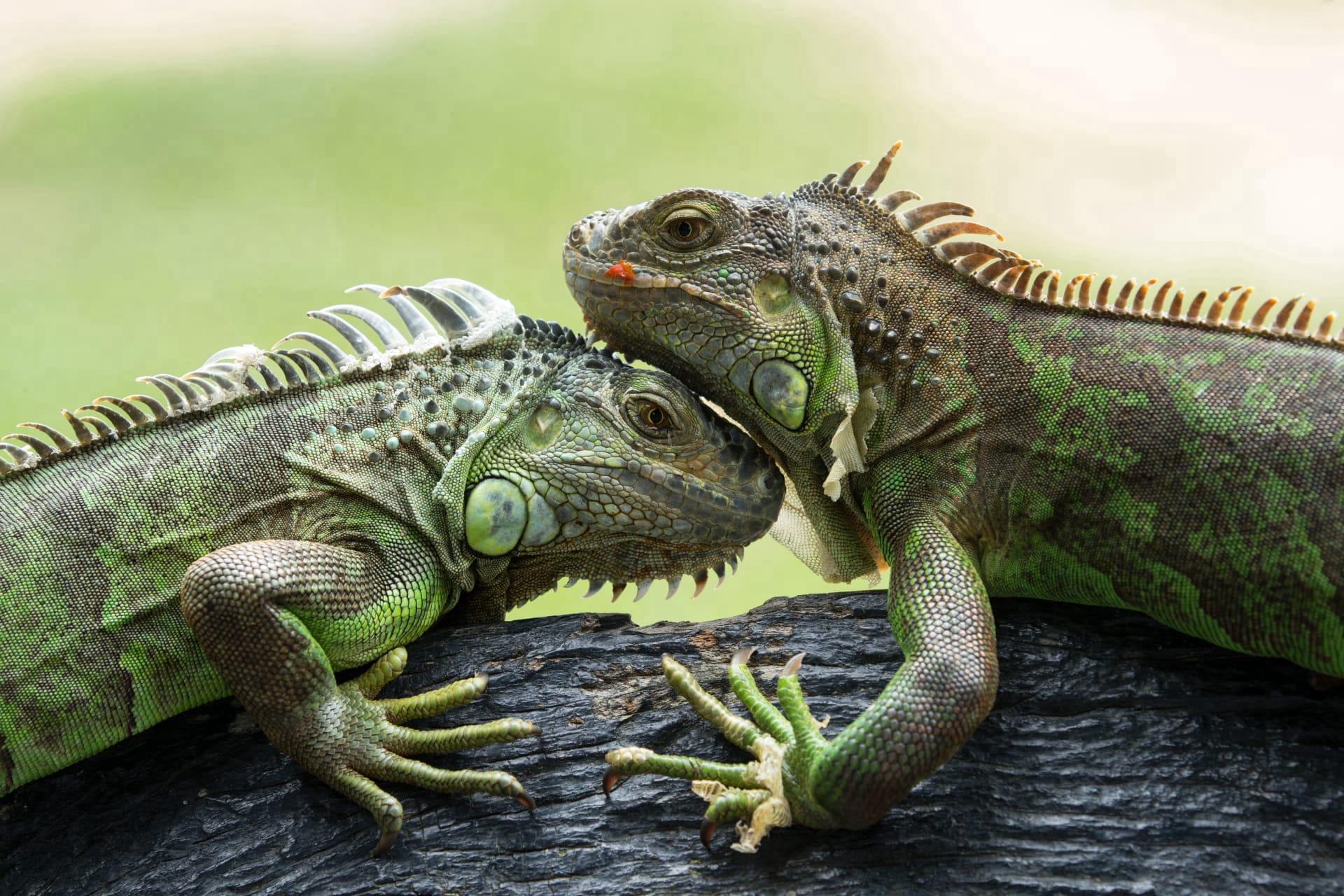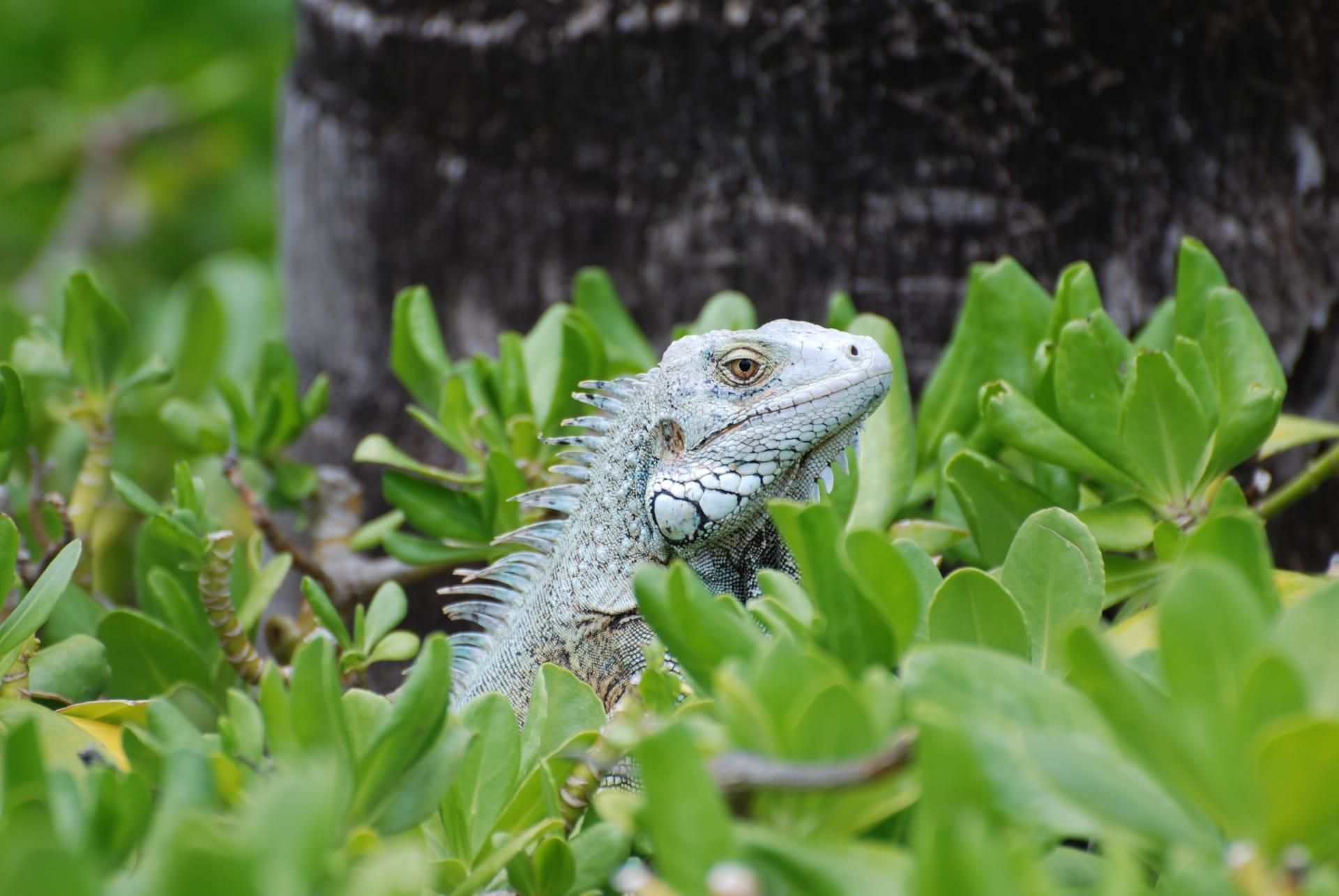Common Iguana Characteristics
- Home /
- Mini Encyclopedia /
- Animal /
- Common Iguana Characteristics
1
The Common Iguana, a fascinating reptile, can grow impressively large, reaching lengths of up to 6 feet, with about half of that being its tail. These creatures typically weigh around 11 pounds, showcasing a robust and muscular physique. Their lifespan is equally notable, as they can live for 15 to 20 years in the wild, and sometimes even longer in captivity, with instances of up to 20 years not being uncommon. The iguana’s skin is tough and scaly, providing a protective barrier against predators and environmental elements. Their coloration varies, generally featuring shades of green which assist in camouflage, but they can also display hues of blue, orange, and pink depending on factors like diet and sun exposure.
The iguana's most distinct organ is its parietal eye, located on the top of its head. This light-sensitive organ doesn't produce images but helps regulate the iguana's circadian rhythms and hormone production, primarily related to reproductive behaviors. It's sensitive to changes in light and dark, which aids the iguana in sensing predators overhead. This parietal eye is a clear evolutionary advantage, allowing the iguana to be more aware of its surroundings, thereby increasing its chances of survival in the wild.

2
Question: What do Common Iguanas eat?
Answer: Common Iguanas are primarily herbivorous, meaning they eat mostly plants. Their diet consists mainly of leaves, fruits, and flowers. They are particularly fond of leafy greens like kale, mustard greens, and dandelion leaves, and enjoy fruits like mangoes, figs, and bananas. It's important to note that while they can eat some animal-based proteins, these should be a minimal part of their diet as excessive protein can lead to health issues. A balanced diet rich in calcium and low in phosphorus is vital for their health, helping prevent metabolic bone disease, a common ailment in captive iguanas.

3
The Common Iguana is known for its impressive agility and strength. These reptiles are excellent climbers, using their strong limbs and sharp claws to ascend trees and other high surfaces. Their long tails aid in balance, allowing them to navigate through treetops and branches with ease. On the ground, they can run swiftly, especially when escaping predators or chasing after food. Iguanas are also capable swimmers, using their tails to propel through water, an ability that aids them in avoiding aquatic predators and crossing bodies of water.
In terms of hunting and feeding, Common Iguanas rely on their keen eyesight to locate food. They have sharp vision, enabling them to spot small details from a distance. Their diet primarily consists of plants, so their foraging involves seeking out leaves, fruits, and flowers. They use their strong jaws to tear food, and their teeth are well adapted for shredding plant material. While they are not predatory by nature, they occasionally consume insects or small animals, especially during their younger stages.

4
Common Iguanas are native to Central and South America, thriving in a variety of habitats including rainforests, coastal regions, and even urban areas. They prefer areas with abundant foliage for food and cover, and are often found near water sources. These adaptable reptiles are skilled at surviving in different environmental conditions, although they require warm temperatures to maintain their body heat. Exposure to sunlight is crucial for their health, as it helps them synthesize vitamin D3, vital for calcium absorption.
The breeding behavior of Common Iguanas is quite intriguing. They usually breed during the dry season. Females lay clutches of 20 to 70 eggs, which they bury in sandy or soft soil. Incubation lasts about 10 to 15 weeks, and the hatchlings are independent from birth, equipped to climb and fend for themselves. The mother does not care for the young, who must survive on their own. This high number of eggs compensates for the high mortality rate among juveniles due to predators and environmental challenges.

5
Book: "Iguanas: Biology and Conservation" by James B. Murphy and Kirstin H. Shaney. This comprehensive work, published in the United States in 2002, delves into the biology, behavior, and conservation of iguanas, with a special focus on the Common Iguana. The authors, experts in herpetology, provide a detailed overview of iguana anatomy, physiology, and ecology. The book also discusses the challenges iguanas face in the wild, including habitat loss and the pet trade, offering insights into conservation efforts.
Book: "The Secret Life of the Iguana" by Alison Bankroft, published in the United Kingdom in 2010. This book offers an engaging and accessible insight into the world of the Common Iguana. Bankroft, a renowned wildlife biologist, narrates the life cycle, habitat, and behaviors of these creatures in a style that captivates both young readers and adults. She combines scientific facts with interesting anecdotes, making the book a delightful read for anyone interested in learning more about these fascinating reptiles.